Compostable-plastic – Battery – rPET 08-11-2022 - Arhive
Compostable-plastic – Battery – rPET
Crude Oil Prices Trend
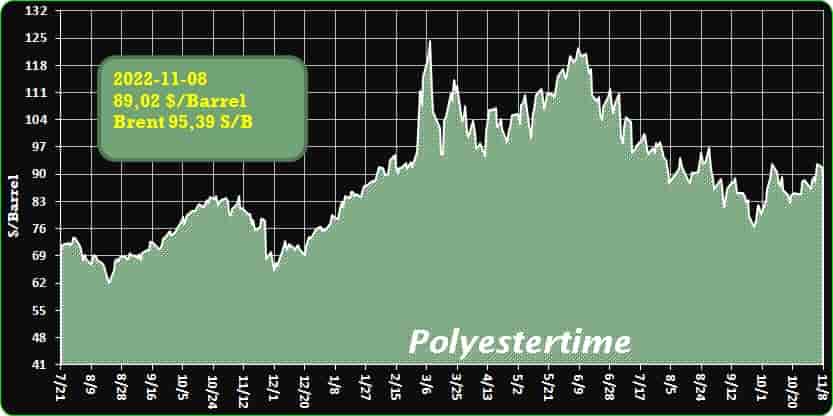
-Hologenix and Unifi Partner to Introduce New Product
Materials science company Hologenix, creators of Celliant, and global textile solutions provider Unifi, makers of Repreve, have teamed up to introduce Celliant with Repreve.
The new performance fiber has the infrared properties of Celliant infrared technology and the sustainable footprint of Repreve, one of the world’s leading brands of recycled fiber.
“We are honored to partner with sustainability leader Unifi and its Repreve fiber,” said Seth Casden, co-founder and chief executive officer of Hologenix, based in Pacific Palisades, California. “Celliant with Repreve marries self-care and sustainability for a new generation of products.”
Celliant is a blend of infrared radiation–generating bioceramic minerals, which, when embedded into textiles, allows them to convert body heat into infrared energy, returning it to the body and temporarily increasing circulation and cellular oxygenation, according to a news release. This process can aid in muscle recovery, increase endurance, and improve overall performance in healthy individuals, among other benefits, officials said.
Repreve recycled performance fiber consists of high-quality fibers made from 100% recycled materials, including post-consumer plastic bottles and pre-consumer waste. It is also certified and traceable with U Trust verification and FiberPrint technology to back up customers’ recycled claims. Compared to virgin fiber, Repreve helps to offset the use of petroleum, emitting fewer greenhouse gasses and conserving water and energy in the process.
Both Celliant and Repreve are used in many brands across many sectors, from apparel and sportswear to upholstery fabric and more, so the new partnership opens an array of possible applications.
“We’re excited that the infrared component of Celliant with Repreve provides enhanced health and wellness benefits and that we are expanding the use of sustainable fiber options that positively impact our planet, both now and in the future,” said Eddie Ingle, chief executive officer of Unifi, headquartered in Greensboro, North Carolina.
Celliant with Repreve’s official North America knitting partner is Beverly Knits, one of the largest circular knitters in the United States, developing fabric for all markets including intimate apparel, activewear, outdoor products, mattress and bedding, automotive, industrial and medical. Compostable-plastic – Battery – rPET
Based in Gastonia, North Carolina, Beverly Knits also operates Creative Dyeing & Finishing, LLC. The new three-way partnership allows the production of finished goods to take place within a 300-mile radius, from Celliant mineral processing to final product.
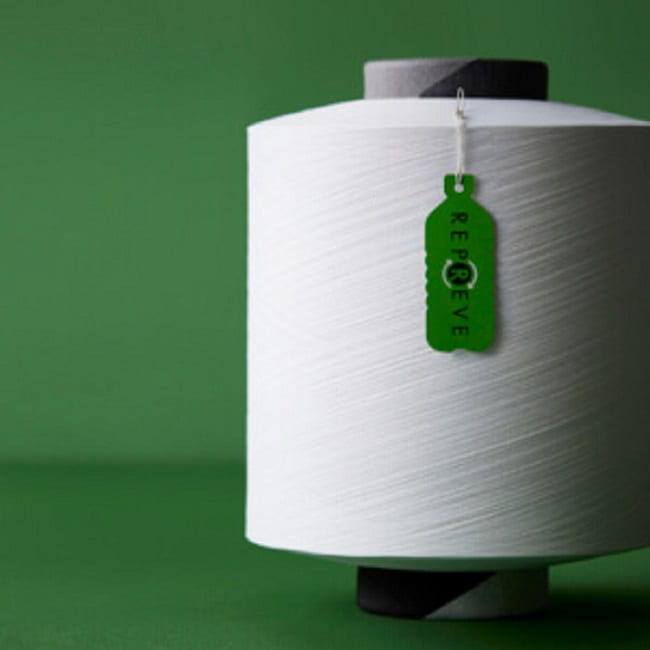
-Research found thermal properties of cellulose nanofibers yield surprising results
Plant-derived materials such as cellulose often exhibit thermally insulating properties. A new material made from nanoscale cellulose fibres shows the reverse, high thermal conductivity. This makes it useful in areas previously dominated by synthetic polymer materials. Compostable-plastic – Battery – rPET
Materials based on cellulose have environmental benefits over polymers, so research on this could lead to greener technological applications where thermal conductivity is needed. In recent years, many commercial products have used cellulose nanofiber (CNF) materials because their strength and durability make them a good replacement for polymer-based materials such as plastics which can be detrimental to the environment.
A research team led by Professor Junichiro Shiomi from the University of Tokyo’s Graduate School of Engineering has investigated previously unknown thermal properties of CNF, and their findings show these materials could be even more useful
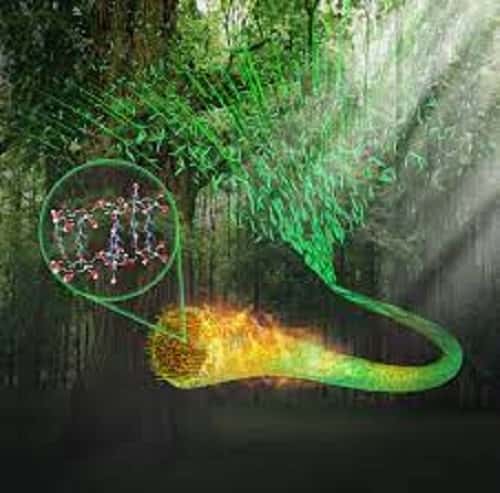
-Defect discovered in compostable plastic, 60% does not decompose – Biotech
A big defect has been discovered in plastic certified as compostable even at home: 60% does not really decompose (Source: Citizen scientist image from www.bigcompostexperiment.org.uk) © Ansa
A big defect has been discovered in plastic certified as compostable even at home: 60% does not really decompose (Source: Citizen scientist image from www.bigcompostexperiment.org.uk) © ANSA / Ansa
A big defect has been discovered in plastic certified as compostable even at home: 60% does not really decompose and therefore ends up polluting even more vegetable gardens and gardens where it is unknowingly reused. Compostable-plastic – Battery – rPET
This was stated by a study by the University College of London, published in the journal Frontiers in Sustainability, which involved British citizens in a great experiment. The research also shows how labels applied to compostable and biodegradable plastic items are misleading and confuse consumers, leading to incorrect waste disposal.
Global plastic pollution is one of the greatest environmental challenges of our time: a report published last February by the Organization for Economic Cooperation and Development (OECD) shows that plastic consumption has quadrupled in the last 30 years, and only 9% is recycled. The demand for compostable plastics is therefore growing more and more, with uses in organic waste bags, food packaging, plates and cutlery.
The problem, highlighted by the study led by Danielle Purkiss, is that this type of plastic is currently incompatible with most waste management systems and there is no international standard for domestic compostable plastics. The fate of these plastics, once thrown away, is therefore incineration or landfilling, a fact of which consumers are unaware.
“We have shown that home composting, being uncontrolled, is largely ineffective and not a good method of disposal for compostable packaging,” says Purkiss. “The idea that a material can be sustainable is a widespread misunderstanding: in reality – adds the researcher – what is sustainable is the system by which that material is produced and recycled”.
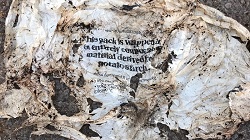
-Chinese battery plant to start operations in Portugal by 2025
A Chinese manufacturer, Aviation Lithium Battery Technology, wants the battery factory for electric vehicles in Sines to start operating by 2025, a company representative said on Thursday.
The company’s executive director said that operations at the future unit will start at the end of 2025 so that the batteries can “leave Sines for Europe the following year to be installed in several European cars by the end of the first quarter” of 2026, Nuno Gameiro, who represents China Aviation Lithium Battery Technology (CALB) in Portugal, told Lusa.
Gameiro said that the first CALB factory in Europe would be built in several phases, the first involving building the industrial unit on “50 of the 100 hectares” of land. The first phase of investment, the value of which was not announced, “is to accommodate the order portfolio that [the company] already has at this time” in Europe, he said.
According to the official, in a second phase, in 2028, the company planned to expand the facilities, occupying the entire 100 hectares of land, which would allow it to “increase from 15 to 45 gigawatt-hours (GWh). Compostable-plastic – Battery – rPET
CALB, he explained, “will start with 15 GWh” due to the “immediate demand it has” but is expected to need “around 100 hectares of land” to “accommodate demand until 2028.”
“If everything is going well, there will be the 3rd phase to double the factory, making it as big as the biggest European [factory], which is Tesla’s, and another 100 hectares would be needed. So it would cover 200 hectares,” he said.
According to Gameiro, the lithium batteries produced in this unit are intended exclusively for the European market. This will “positively impact the GDP [Gross Domestic Product] because all sales are exports. If everything goes as expected, in a horizon year between 2028 and 2030, this factory may represent 4.2% of GDP,” he said.
In a statement to the Hong Kong stock exchange, CALB said on Wednesday it had signed a memorandum of understanding with a subsidiary of Portugal’s Agency for Investment and Foreign Trade (AICEP).
The agreement with AICEP Global Parques, manager of the Sines Industrial and Logistics Zone (ZILS), provides for the acquisition of “surface rights to set up a world-leading, highly intelligent, computerised and automated factory, with zero carbon emissions,” the company said
According to the China Automotive Power Battery Industry Innovation Alliance, an industry association, CALB was the third-largest Chinese manufacturer of batteries for electric cars in 2021.
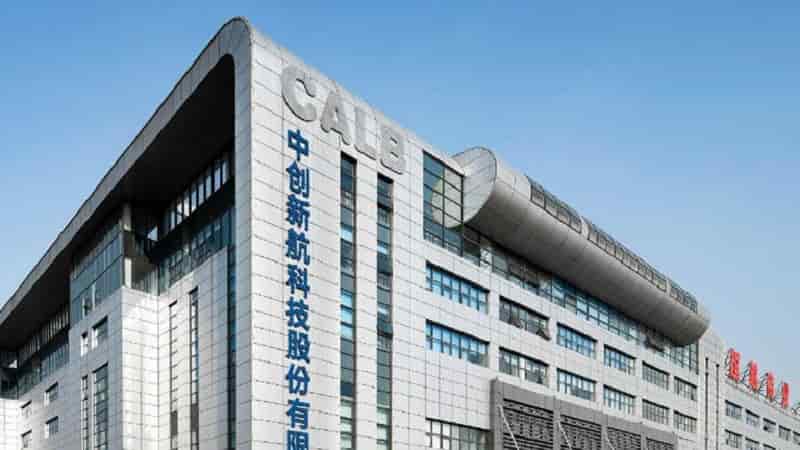
-TAZIZ and Reliance launch USD2 bn chemicals plant JV in Ruwais
Abu Dhabi Chemicals Derivatives Company RSC Ltd (“TA’ZIZ”) and Reliance Industries Limited (RIL), have agreed to launch TA’ZIZ EDC & PVC, a world-scale chemical production partnership at the TA’ZIZ Industrial Chemicals Zone in Ruwais, said Transportandlogisticsme.
The new joint-venture will construct and operate a Chlor-Alkali, Ethylene Dichloride (EDC) and Polyvinyl Chloride (PVC) production facility, with an investment of more than USD2 billion.
Representing the first production of these chemicals in the UAE, the project will enable the substitution of imports and the creation of new local value chains, while also meeting growing demand for these chemicals globally.
The TA’ZIZ Industrial Chemicals Zone is a joint venture between Abu Dhabi National Oil Company (ADNOC) and ADQ.
The project builds on ADNOC and Reliance’s long-standing strategic partnership and is Reliance’s first investment in the MENA region.
The signing of the joint venture terms, which are subject to regulatory approvals, was witnessed by His Excellency Dr. Sultan Ahmed Al Jaber, UAE Minister of Industry and Advanced Technology and ADNOC Managing Director and Group CEO and Reliance Industries Chairman and Managing Director, Mr. Mukesh D. Ambani.
The joint venture terms were signed by Mr. Khaleefa Al Mheiri, Acting CEO of TA’ZIZ and Mr. Kamal Nanavaty, President Strategy and Business Development of Reliance Industries Limited.

Europe R-PET market faces tough and unpredictable Q4
The European recycled polyethylene terephthalate (R-PET) market has entered one of the most turbulent periods in its history as industry veterans and newcomers alike struggle to predict the outlook as they meet at K Fair.
In a case of ‘be careful what you wish for’, the R-PET market has gone from tight supply and record-high prices in the first half of the year to massive oversupply, slow demand, and record-breaking price drops in October.
Although record-high post-consumer bottle (PCB), flake and food-grade pellet (FGP) prices were always expected to ease, the speed of the downturn since the summer has taken the market by surprise.
Free delivered (FD) northwest Europe (NWE) colourless (C) PCB, C flake and even mixed coloured (MC) flake monthly prices all posted the largest single price drop since ICIS introduced the quotes in 2006. Compostable-plastic – Battery – rPET
There are several reasons for this:
- Large PET bottles consumed in summer entered recycling stream
- Low PET prices prompted a significant substitution away from R-PET
- PCB and flake buyers’ stocks are high and buying appetite is down
- Macroeconomic uncertainty, high inflation, slow end-use demand
PCB stock levels in September and October have become so large in some cases that some waste managers have asked customers if they could use any spare storage. PCB quality can degrade the longer it is kept in storage, especially outside. Some buyers have also tried to buy lower-priced bales to bring the overall cost of the product down. Flake producers are also sitting on a lot of stock, forcing some to slash prices to shift material and free up some much-needed cash flow. However, lower prices have not translated into higher demand.
ENERGY AND ECONOMY CONCERNS
Players in the European R-PET market say post-summer demand for recycled content has failed to materialise, and many do not think it will return anytime soon. Brands and fast-moving consumer good (FMCG) companies are revising or reconsidering their recycled content targets, and several suppliers to both sectors have noted a drop in volumes, which they expect to continue into 2023.
This is despite the EU’s mandated target of 25% R-PET content in PET beverage bottles by 2025 creeping closer. In the sheet and thermoforming sector – which does not yet have an EU-mandated recycled content target although the EU has plans to introduce one – packaging companies will continue to save on costs by using cheaper PET and cutting the volume of R-PET content in products.
In addition, rising inflation and recession fears have prompted consumers to change purchasing habits, in turn impacting R-PET demand. However, rising energy costs are likely to be the biggest concern and challenge for the R-PET market for the foreseeable future. In Europe, recyclers have seen their electricity bills double, triple, and quadruple, impacting the final price of flake and pellets in a market which is already incredibly price-sensitive. How a country’s government or energy provider handles the expected rise in electricity costs will put a recycler at an advantage or disadvantage depending on where it is. Recyclers in Italy already pay considerably higher electricity costs compared to neighbour Spain, according to one Italian recycler in mid-October. Adding to this is the concern that the war in Ukraine will cause a reduction or even a cut in Russian gas supplies to Europe, and the prospect that this could stop R-PET production. If gas prices also rise in winter, consumer habits may change again, making predictions about demand even harder. Compostable-plastic – Battery – rPET
The only certainty is uncertainty as the cold winter draws in. Some just want to settle in and ride out the coming storm, hoping 2023 will offer a sunnier outlook – but few expect to see the dark clouds currently looming over the R-PET market to clear any time soon.
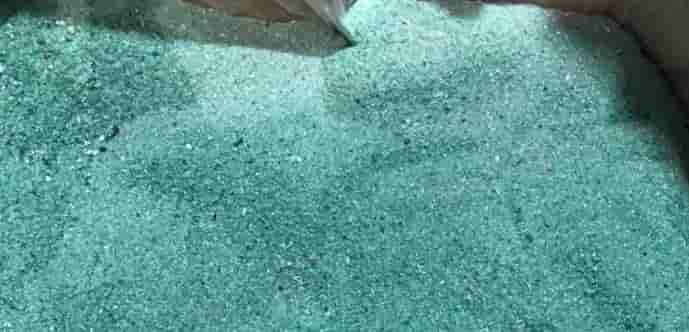
-Ottawa-born scientist on turning agricultural waste into plastic alternative called ‘Grasstic’
Amanda Johnson is a nature-loving biochemist working to create a plastic alternative from crop leftovers.
“When you spend time in nature you develop a relationship and want to protect it,” says Johnson, an eloquent and ardent PhD student in the Faculty of Forestry at the University of British Columbia.
Johnson, a lifelong camper, hiker, nature lover and mother of two young children, who grew up in Ottawa and studied biochemistry at the University of Ottawa, is researching turning agricultural waste into an alternative to plastic.
She calls the product she developed, “Grasstic” – a bioplastic made from the residual stalks of crops like corn or wheat. Compostable-plastic – Battery – rPET
“It’s abundant agricultural waste and currently no-one is doing anything with it other than bailing it off the field or sometimes tilling it in,” explains Johnson.
“I thought I’m going to play around with this in the lab and I did.”
Johnson says she tried different formulation processes.
“And it was pretty amazing because I actually held this plastic in my hand thinking it looks like plastic, it feels like plastic. I knew I was onto something.”
Johnson turned to her younger brother, David, for the name.
“He said, ‘It’s made from grass, right?’ I said, ‘Yeah’. He said, ‘call it Grasstic.'”
Grasstic stuck.
And ‘fantastic’ aspects of Grasstic were first learned when Johnson worked with grasses during her Masters.
“Grasses are made up of 20 per cent of the biopolymer called xylan and nothing is being done with it. It’s just a matter of getting it out of the plants and putting it into bioplastics,” she says.
There are biodegradable plastic products out there but Johnson, committed to food sustainability, and conscious of food scarcity issues, wants to improve the options currently on the market.
“If you go to the store, you’ll be able to see biodegradable plastic bags that are made from plant polymers. The thing with these is that they’re made from corn, corn starch,” says Johnson.
“When we start making packaging out of our food, we are going to run into problems with scarcity. We want to make them out of things that aren’t food.”
The best uses for Grasstic, so far, are in packaging dry goods.
“Those films that you have on pastry products or dried goods boxes would be a perfect application for Grasstic.”
Johnson demonstrates Grasstic being used to replace the plastic windows of pasta boxes and baked goods.
Those boxes then become totally biodegradable.
Johnson hosted a podcast about food, farming and sustainability and was motivated to get into the lab to create a new bioplastic when she learned the stats on plastics.
“Ninety per cent of the plastics we use, even the ones we put into the recycle bin, are never going to be recycled.”
“They’re going to end up in an incinerator, or landfill, or worst-case scenario, contaminating our environment where they’ll stick around,” says the research scientist.
Grasstic is now being tested for its rate of biodegradability.
“If you were to toss a Grasstic bag in your home compost, it would be completely gone in six weeks. If you sent it off to an industrial composting facility, it would be gone in four weeks,” says the scientist.
“Currently, I’m testing how Grasstic biodegrades in the ocean. We are on day 95 of the experiment, and more than half of the Grasstic has biodegraded. So Grasstic is well on its way to being certified biodegradable.” Compostable-plastic – Battery – rPET
Why we need plastic alternatives
“Nature has no way of breaking down plastic,” Johnson says.
“Plastics break down into microscopic pieces called microplastics.”
“Microplastics get into our water and our food. Scientists are only beginning to understand the problems they cause when ingested.”
Plastics are made out of fossil fuels, which are a non-renewable resource.
“Huge amounts of plastic have accumulated in the ocean. Sea animals such as turtles and albatross mistake plastic for food and it kills them.”
That reality drives Johnson’s work. Her time in the lab for Johnson is fuelled by a lifetime spent outdoors.
“I’ve been close to nature my entire life. Growing up, my siblings and I spent countless hours playing in the forest behind our Ottawa home. My dad would take us biking along the Rideau Canal. My mom went camping with us.”
And while Johnson, who now calls Victoria, B.C. home, reflects on that Ottawa past, she and her husband, Greg, are looking to create a promising future for their four-year-old, Millie and 15-month old Ori.
“Now that I’m a mom I want my kids to have the same chance to connect with nature. And that makes me passionate about preserving the environment.”
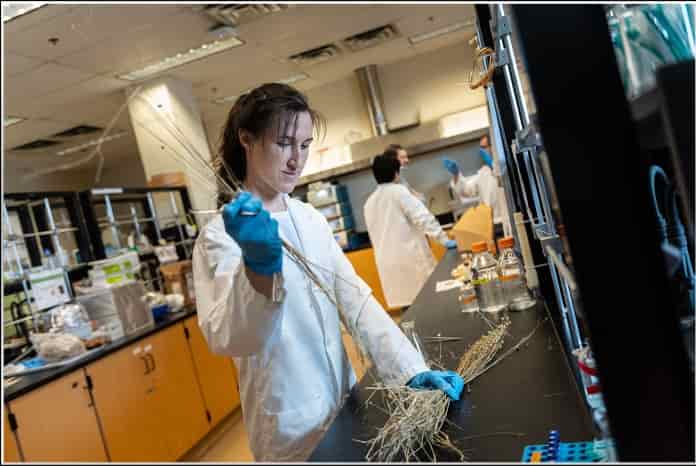
-Huntsman Develops Breakthrough Bio-based Polyurethane System
Visco-elastic foam containing up to 20% bio-based content lowers automotive carbon footprint without sacrificing performance.
Huntsman has launched Acoustiflex VEF BIO — a visco-elastic foam containing up to 20% bio-based content derived from vegetable oils for molded acoustic applications in the automotive industry. This new solution can lower the carbon footprint of automotive carpet back-foaming by up to 25% compared with existing Huntsman systems for this application. The technology can also be used for dash and wheel arch insulation.
The Acoustiflex VEF BIO system addresses rising demand for material technologies that can help automotive manufacturers lower their carbon footprint without sacrificing performance. The bio-based content in its Acoustiflex VEF BIO system has zero impact on any of the acoustic or mechanical characteristics required by makers of parts or automotive OEMs, said Huntsman.
Irina Bolshakova, Global Marketing Lead for Automotive Polyurethanes at Huntsman, explains more: “Previously, there was a frustration that incorporating bio-based content into a polyurethane (PU) foam system would have a detrimental impact on performance, specifically on emission and odor levels. The development of our Acoustiflex VEF BIO system proves that doesn’t need to be the case.” Compostable-plastic – Battery – rPET
To wit:
Acoustic performance analysis experiments show that Huntsman’s original VEF systems can outclass standard high-resilient (HR) foams at lower frequencies (<500 Hz). Acoustiflex VEF BIO system achieves the same magnitude of sound-reducing capability.
In developing the Acoustiflex VEF BIO system, Huntsman has continued its work in the development of zero-amine, zero-plasticizer, and extremely low aldehyde-emitting PU foams. As a result, the system is ranked low in emissions and odor.
The Acoustiflex VEF BIO system remains lightweight.
Huntsman’s automotive team has ensured there are no associated processing disadvantages. The Acoustiflex VEF BIO system can still be used to quickly create components that have complex geometric shapes and sharp angles, with high productivity rates and demold times as low as 80 seconds, depending on part design.
“Polyurethanes are very hard to beat when it comes to pure acoustic performance,” continued Irina. “They are incredibly effective at muffling sound, reducing vibrations, and dampening down any harshness caused by the movement of a vehicle. Our Acoustiflex VEF BIO system takes that to the next level. Incorporating bio-based content into the mix to deliver a lower carbon acoustic solution, that does not compromise emission or odor requirements, is far better for vehicle brands and their partners and customers – but also the planet.”
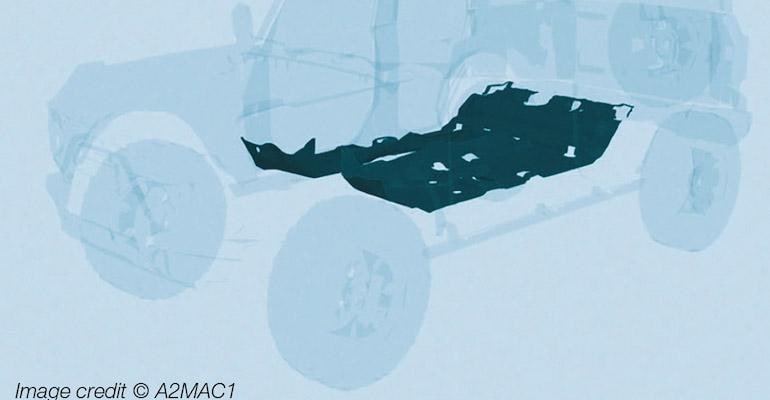
Compostable-plastic – Battery – rPET
